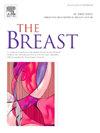Denosumab versus zoledronic acid in metastatic breast cancer: A retrospective observational analysis of 24-dose regimens on analgesia and skeletal-related event prevention
IF 7.9
2区 医学
Q1 OBSTETRICS & GYNECOLOGY
引用次数: 0
Abstract
Background
Based on available data in the literature, current evidence supporting the analgesic role of antiresorptive drugs is weak. This study compared the efficacy of zoledronic acid (ZA) and denosumab (Dmab) in reducing bone pain and first Skeletal Related Events (SREs) in real world setting.
Methods
A retrospective observational cohort study was conducted in patients with female breast cancer-related bone metastases at the Fondazione IRCCS Istituto Nazionale dei Tumori in Milan, Italy, from January 2008 to January 2023. Patients were included if they had undergone at least 24 consecutive administrations of ZA or Dmab. The primary endpoint was the analgesic effect, evaluated in terms of average pain intensity, analgesic drug use (Word Health Organization analgesic ladder), and daily opioid doses (oral morphine equivalent, OME) assessed at 3, 6, 12, 18, and 24 months, analyzed by Bayesian longitudinal mixed-effects models. Secondary endpoints included first SREs and radiotherapy/surgery incidence.
Results
Among 364 patients (194 ZA, 170 Dmab), Dmab demonstrated a significant analgesic advantage. Dmab group showed an 89 % lower likelihood of increasing one analgesic ladder step, a mean reduction of 0.4 points on the numerical rating scale (95 % CI, −0.7, −0.1), and lower daily OME doses (0.77 mg vs. 6.2 mg for ZA). At 12 and 24 months, ZA and Dmab showed similar cumulative incidences of SREs and radiotherapy/surgery (p = 0.601 and p = 0.923).
Conclusions
Dmab showed consistent superior effect than ZA in reducing bone pain in metastatic BC, yet both treatments delivered similar protection against SREs and the need for radiotherapy or surgery.
Denosumab与唑来膦酸治疗转移性乳腺癌:24剂量方案镇痛和骨骼相关事件预防的回顾性观察分析
背景根据现有文献资料,目前支持抗吸收药物镇痛作用的证据不足。本研究比较了唑来膦酸(ZA)和地诺单抗(Dmab)在现实世界中减轻骨痛和首次骨骼相关事件(SREs)的疗效。方法回顾性观察队列研究于2008年1月至2023年1月在意大利米兰的基金会IRCCS国家肿瘤研究所对女性乳腺癌相关骨转移患者进行研究。如果患者至少连续24次服用ZA或Dmab,则纳入研究。主要终点是镇痛效果,根据3、6、12、18和24个月的平均疼痛强度、镇痛药物使用(世界卫生组织镇痛阶梯)和每日阿片类药物剂量(口服吗啡当量,OME)进行评估,通过贝叶斯纵向混合效应模型进行分析。次要终点包括首次SREs和放疗/手术发生率。结果在364例患者中(194例ZA, 170例Dmab), Dmab显示出明显的镇痛优势。Dmab组增加一个镇痛阶梯级的可能性降低89%,在数值评定量表上平均降低0.4点(95% CI, - 0.7, - 0.1),每日OME剂量降低(0.77 mg vs. ZA 6.2 mg)。在12个月和24个月时,ZA和Dmab的SREs和放疗/手术的累积发生率相似(p = 0.601和p = 0.923)。结论sdmab在减轻转移性BC骨痛方面的效果优于ZA,但两种治疗方法对SREs的保护作用相似,无需放疗或手术。
本文章由计算机程序翻译,如有差异,请以英文原文为准。
求助全文
约1分钟内获得全文
求助全文
来源期刊

Breast
医学-妇产科学
CiteScore
8.70
自引率
2.60%
发文量
165
审稿时长
59 days
期刊介绍:
The Breast is an international, multidisciplinary journal for researchers and clinicians, which focuses on translational and clinical research for the advancement of breast cancer prevention, diagnosis and treatment of all stages.
 求助内容:
求助内容: 应助结果提醒方式:
应助结果提醒方式:


